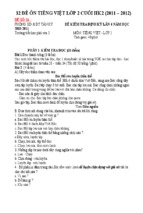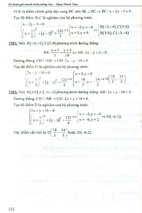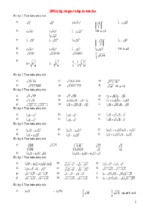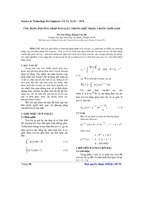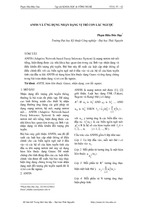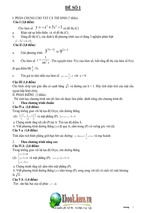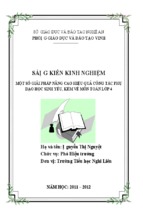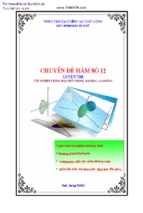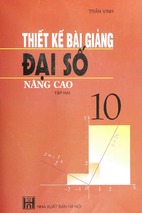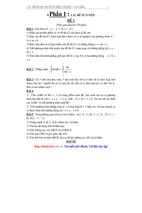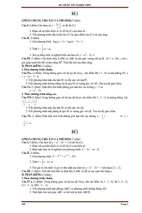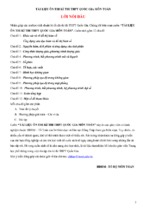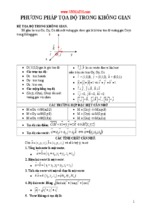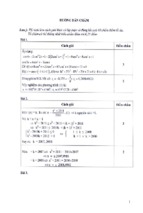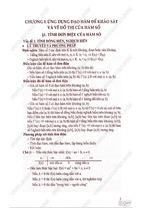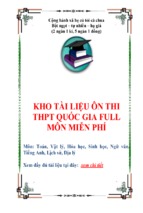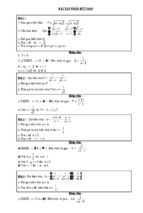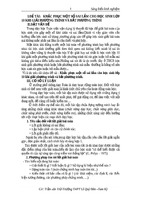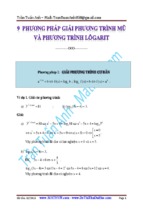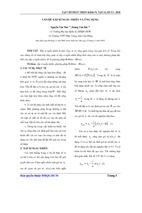Page iii
The Language of Mathematics
Making the Invisible Visible
Keith Devlin
Page iv
Text Design:
Diana Blume
Illustrations:
Mel Erikson Art Services, Publication Services,
Ian Warpole, Network Graphics
Library of Congress Cataloging-in-Publication Data
Devlin, Keith J.
The language of mathematics: making the invisible visible / Keith
Devlin.
p. cm.
Includes index.
ISBN 0-7167-3379-X (hardcover)
ISBN 0-7167-3967-4 (paperback)
1. Mathematics—Popular works. I. Title.
QA93.D4578 1998
510—dc21
98-38019
CIP
© 1998, 2000 by W. H. Freeman and Company. All rights reserved.
No part of this book may be reproduced by any mechanical, photographic, or electronic process, or in the
form of a phonographic recording, nor may it be stored in a retrieval system, transmitted, or otherwise
copied for public or private use, without written permission from the publisher.
Printed in the United States of America
First paperback printing 2000
W. H. Freeman and Company
41 Madison Avenue, New York, NY 10010
Houndmills, Basingstoke RG21 6XS, England
Page v
Contents
Preface
vii
Prologue
What is Mathematics?
1
Chapter 1
Why Numbers Count
13
Chapter 2
Patterns of the Mind
51
Chapter 3
Mathematics in Motion
95
Chapter 4
Mathematics Gets into Shape
139
Chapter 5
The Mathematics of Beauty
189
Chapter 6
What Happens When Mathematics Gets into Position
221
Chapter 7
How Mathematicians Figure the Odds
271
Chapter 8
Uncovering the Hidden Patterns of the Universe
299
Postscript
337
Index
339
Page vii
Preface
This book tries to convey the essence of mathematics, both its historical development and its current breadth.
It is not a 'how to' book; it is an 'about' book, which sets out to describe mathematics as a rich and living part
of humankind's culture. It is intended for the general reader, and does not assume any mathematical
knowledge or ability.
The book grew from an earlier volume in W. H. Freeman's Scientific American Library series, titled
Mathematics: The Science of Patterns. Written for what is generally termed a 'scientifically literate'
audience, that book proved to be one of the most successful in the Scientific American Library series. In
conversation with Jonathan Cobb, my editor on that project, the idea arose of a 'spin-off' book aimed at a
much wider audience. The new book would not have the high-gloss finish and the masses of full-color
artwork and photographs that make the Scientific American Library series so special. Rather, its aim would
be to get essentially the same story across in a format that made it accessible to a much wider collection of
readers: the story that mathematics is about the identification and study of patterns. (Like its predecessor,
this book will show just what counts as a 'pattern' for the mathematician. Suffice it at this point to observe
that I am not just talking about wallpaper patterns or patterns on shirts and dresses—though many of those
patterns do turn out to have interesting mathematical properties.)
In addition to completely rewriting much of the text to fit a more standard 'popular science book' format, I
have also taken advantage of the change of format to add two additional chapters, one on patterns of
Page viii
chance, the other on patterns of the (physical) universe. I had wanted to include both topics in the original
book, but there was not enough space in the Scientific American Library format.
Fernando Gouvea, Doris Schattschneider, and Kenneth Millett offered comments on all or parts of the
manuscript for the original Scientific American Library book, and their helpful advice has undoubtedly
found its way into this new book. Ron Olowin provided helpful feedback on Chapter 8, which along with
Chapter 7 is brand new to this book. Susan Moran was the ever-vigilant copy editor for the Patterns book.
Norma Roche copy-edited this new book.
Historically, almost all leading mathematicians were male, and that is reflected in the almost complete
absence of female characters in the book. Those days are, I hope, gone forever. To reflect today's reality, this
book uses both 'he' and 'she' interchangeably as the generic thirdperson pronoun.
Page 1
Prologue:
What Is Mathematics?
It's Not Just Numbers
What is mathematics? Ask this question of persons chosen at random, and you are likely to receive the
answer "Mathematics is the study of numbers." With a bit of prodding as to what kind of study they mean,
you may be able to induce them to come up with the description "the science of numbers." But that is about
as far as you will get. And with that, you will have obtained a description of mathematics that ceased to be
accurate some two and a half thousand years ago!
Given such a huge misconception, there is scarcely any wonder that your randomly chosen persons are
unlikely to realize that research in mathematics is a thriving, worldwide activity, or to accept a suggestion
that mathematics permeates, often to a considerable extent, most walks of present-day life and society.
In fact, the answer to the question "What is mathematics?" has changed several times during the course of
history.
Up to 500 B.C. or thereabouts, mathematics was indeed the study of numbers. This was the period of
Egyptian and Babylonian mathematics. In those civilizations, mathematics consisted almost solely of
arithmetic. It was largely utilitarian, and very much of a 'cookbook' nature ("Do such and such to a number
and you will get the answer").
The period from around 500 B.C. to A.D. 300 was the era of Greek mathematics. The mathematicians of
ancient Greece were primarily concerned with geometry. Indeed, they regarded numbers in a geomet-
Page 2
ric fashion, as measurements of length, and when they discovered that there were lengths to which their
numbers did not correspond (irrational lengths), their study of number largely came to a halt. For the Greeks,
with their emphasis on geometry, mathematics was the study of number and shape.
In fact, it was only with the Greeks that mathematics came into being as an area of study, and ceased being a
collection of techniques for measuring, counting, and accounting. The Greeks' interest in mathematics was
not just utilitarian; they regarded mathematics as an intellectual pursuit having both aesthetic and religious
elements. Thales introduced the idea that the precisely stated assertions of mathematics could be logically
proved by a formal argument. This innovation marked the birth of the theorem, now the bedrock of
mathematics. For the Greeks, this approach culminated in the publication of Euclid's Elements, reputedly the
most widely circulated book of all time after the Bible.
Mathematics in Motion
There were no major changes in the overall nature of mathematics, and hardly any significant advances
within the subject, until the middle of the seventeenth century, when Newton (in England) and Leibniz (in
Germany) independently invented the calculus. In essence, the calculus is the study of motion and change.
Previous mathematics had been largely restricted to the static issues of counting, measuring, and describing
shape. With the introduction of techniques to handle motion and change, mathematicians were able to study
the motion of the planets and of falling bodies on earth, the workings of machinery, the flow of liquids, the
expansion of gases, physical forces such as magnetism and electricity, flight, the growth of plants and
animals, the spread of epidemics, the fluctuation of profits, and so on. After Newton and Leibniz,
mathematics became the study of number, shape, motion, change, and space.
Most of the initial work involving the calculus was directed toward the study of physics; indeed, many of the
great mathematicians of the period are also regarded as physicists. But from about the middle of the
eighteenth century there was an increasing interest in the mathematics itself, not just its applications, as
mathematicians sought to understand what lay behind the enormous power that the calculus gave to
humankind. Here the old Greek tradition of formal proof came back into ascendancy, as a large part of
present-day pure mathematics was developed. By the end of the nineteenth century, mathematics had
become the study of number, shape, motion, change, and space, and of the mathematical tools that are used
in this study.
Page 3
The explosion of mathematical activity that took place in the twentieth century was dramatic. In the year
1900, all the world's mathematical knowledge would have fitted into about eighty books. Today it would
take maybe a hundred thousand volumes to contain all known mathematics. This extraordinary growth has
not only been a furtherance of previous mathematics; many quite new branches of mathematics have sprung
up. In 1900, mathematics could reasonably be regarded as consisting of about twelve distinct subjects:
arithmetic, geometry, calculus, and so on. Today, between sixty and seventy distinct categories would be a
reasonable figure. Some subjects, such as algebra and topology, have split into various subfields; others,
such as complexity theory or dynamical systems theory, are completely new areas of study.
The Science of Patterns
Given this tremendous growth in mathematical activity, for a while it seemed as though the only simple
answer to the question "What is mathematics?" was to say, somewhat fatuously, "It is what mathematicians
do for a living." A particular study was classified as mathematics not so much because of what was studied
but because of how it was studied—that is, the methodology used. It was only within the last thirty years or
so that a definition of mathematics emerged on which most mathematicians now agree: mathematics is the
science of patterns. What the mathematician does is examine abstract 'patterns'—numerical patterns, patterns
of shape, patterns of motion, patterns of behavior, voting patterns in a population, patterns of repeating
chance events, and so on. Those patterns can be either real or imagined, visual or mental, static or dynamic,
qualitative or quantitative, purely utilitarian or of little more than recreational interest. They can arise from
the world around us, from the depths of space and time, or from the inner workings of the human mind.
Different kinds of patterns give rise to different branches of mathematics. For example:
• Arithmetic and number theory study patterns of number and counting.
• Geometry studies patterns of shape.
• Calculus allows us to handle patterns of motion.
• Logic studies patterns of reasoning.
• Probability theory deals with patterns of chance.
• Topology studies patterns of closeness and position.
To convey something of this modern conception of mathematics, this book takes eight general themes,
covering patterns of counting, patterns
Page 4
of reasoning and communicating, patterns of motion and change, patterns of shape, patterns of symmetry and
regularity, patterns of position, patterns of chance, and the fundamental patterns of the universe. Though this
selection leaves out a number of major areas of mathematics, it should provide a good overall sense of what
contemporary mathematics is about. The treatment of each theme, while at a purely descriptive level, is not
superficial.
One aspect of modern mathematics that is obvious to even the casual observer is the use of abstract notation:
algebraic expressions, complicated-looking formulas, and geometric diagrams. The mathematician's reliance
on abstract notation is a reflection of the abstract nature of the patterns he studies.
Different aspects of reality require different forms of description. For example, the most appropriate way to
study the lay of the land or to describe to someone how to find their way around a strange town is to draw a
map. Text is far less appropriate. Analogously, line drawings in the form of blueprints are the most
appropriate way to specify the construction of a building. And musical notation is the most appropriate way
to convey music, apart from, perhaps, actually playing the piece.
In the case of various kinds of abstract, 'formal' patterns and abstract structures, the most appropriate means
of description and analysis is mathematics, using mathematical notation, concepts, and procedures. For
instance, the symbolic notation of algebra is the most appropriate means of describing and analyzing the
general behavioral properties of addition and multiplication. The commutative law for addition, for example,
could be written in English as
When two numbers are added, their order is not important.
However, it is usually written in the symbolic form
m + n = n + m.
Such is the complexity and the degree of abstraction of the majority of mathematical patterns that to use
anything other than symbolic notation would be prohibitively cumbersome. And so the development of
mathematics has involved a steady increase in the use of abstract notation.
Symbols of Progress
The first systematic use of a recognizably algebraic notation in mathematics seems to have been made by
Diophantus, who lived in Alexan-
Page 5
Figure 0.1
The title page of a seventeenth-century Latin
translation of Diophantus' classic text Arithmetic.
dria sometime around A.D. 250. His treatise Arithmetic (Figure 0.1), of which only six of the original thirteen
volumes have been preserved, is generally regarded as the first 'algebra textbook'. In particular, Diophantus
used special symbols to denote the unknown in an equation and to denote powers of the unknown, and he
employed symbols for subtraction and for equality.
These days, mathematics books tend to be awash with symbols, but mathematical notation no more is
mathematics than musical notation is music (see Figure 0.2). A page of sheet music represents a piece of
music; the music itself is what you get when the notes on the page are sung or performed on a musical
instrument. It is in its performance that the music comes alive and becomes part of our experience; the music
exists not on the printed page, but in our minds. The same is true for mathematics; the symbols on a page are
just a representation of the mathematics. When read by a competent performer (in this case, someone trained
in mathematics), the symbols on the printed page come alive—the mathematics lives and breathes in the
mind of the reader like some abstract symphony.
Page 6
Figure 0.2
Like mathematics, music has an abstract notation, used to represent abstract
structures.
Given the strong similarity between mathematics and music, both of which have their own highly abstract
notations and are governed by their own structural rules, it is hardly surprising that many (perhaps most)
mathematicians also have some musical talent.
In fact, for most of the two and a half thousand years of Western civilization, starting with the ancient
Greeks, mathematics and music were regarded as two sides of the same coin: both were thought to provide
insights into the order of the universe. It was only with the rise of the scientific method in the seventeenth
century that the two started to go their separate ways.
For all their historical connections, however, there was, until recently, one very obvious difference between
mathematics and music. Though only someone well trained in music can read a musical score and hear the
music in her head, if that same piece of music is performed by a competent musician, anyone with the sense
of hearing can appreciate the result. It requires no musical training to experience and enjoy music when it is
performed.
For most of its history, however, the only way to appreciate mathematics was to learn how to 'sight-read' the
symbols. Though the structures and patterns of mathematics reflect the structure of, and resonate in, the
human mind every bit as much as do the structures and patterns of music, human beings have developed no
mathematical equivalent of a pair of ears. Mathematics can be 'seen' only with the 'eyes of the
Page 7
mind'. It is as if we had no sense of heating, so that only someone able to sight-read musical notation would
be able to appreciate the patterns and harmonies of music.
In recent years, however, the development of computer and video technologies has to some extent made
mathematics accessible to the untrained. In the hands of a skilled user, the computer can be used to 'perform'
mathematics, and the result can be displayed in a visual form on the screen for all to see. Though only a
relatively small part of mathematics lends itself to such visual 'performance', it is now possible to convey to
the layperson at least something of the beauty and the harmony that the mathematician 'sees' and experiences
when she does mathematics.
When Seeing Is Discovering
Sometimes computer graphics can be of significant use to the mathematician as well as providing the
layperson with a glimpse of the inner world of mathematics. For instance, the study of complex dynamical
systems was begun in the 1920s by the French mathematicians Pierre Fatou and Gaston Julia, but it was not
until the late 1970s and early 1980s that the rapidly developing technology of computer graphics enabled
Benoit Mandelbrot and other mathematicians to see some of the structures Fatou and Julia had been working
with. The strikingly beautiful pictures that emerged from this study have since become something of an art
form in their own right. In honor of one of the two pioneers of the subject, certain of these structures are now
called Julia sets (see Figure 0.3).
Figure 0.3
A Julia set.
Page 8
Another example of the use of computer graphics leading to a deep discovery in mathematics occurred in
1983, when mathematicians David Hoffman and William Meeks IN discovered a brand new minimal surface
(see Plate 1). A minimal surface is the mathematical equivalent of an infinite soap film. Real soap films
stretched across a frame always form a surface that occupies the minimal possible area. The mathematician
considers abstract analogues of soap films that stretch out to infinity. Such surfaces have been studied for
over two hundred years, but, until Hoffman and Meeks made their discovery, only three such surfaces were
known. Today, as a result of computer visualization techniques, mathematicians have discovered many such
surfaces. Much of what is known about minimal surfaces has been established by more traditional
mathematical techniques, involving lots of algebra and calculus. But, as Hoffman and Meeks showed,
computer graphics can provide the mathematician with the intuition needed to find the right combination of
those traditional techniques.
Without its algebraic symbols, large parts of mathematics simply would not exist. Indeed, the issue is a deep
one, having to do with human cognitive abilities. The recognition of abstract concepts and the development
of an appropriate language to represent them are really two sides of the same coin.
The use of a symbol such as a letter, a word, or a picture to denote an abstract entity goes hand in hand with
the recognition of that entity as an entity. The use of the numeral '7' to denote the number 7 requires that the
number 7 be recognized as an entity; the use of the letter m to denote an arbitrary whole number requires that
the concept of a whole number be recognized. Having the symbol makes it possible to think about and
manipulate the concept.
This linguistic aspect of mathematics is often overlooked, especially in our modern culture, with its
emphasis on the procedural, computational aspects of mathematics. Indeed, one often hears the complaint
that mathematics would be much easier if it weren't for all that abstract notation, which is rather like saying
that Shakespeare would be much easier to understand if it were written in simpler language.
Sadly, the level of abstraction in mathematics, and the consequent need for notation that can cope with that
abstraction, means that many, perhaps most, parts of mathematics will remain forever hidden from the
nonmathematician; and even the more accessible parts—the parts described in books such as this one—may
be at best dimly perceived, with much of their inner beauty locked away from view. Still, that does not
excuse those of us who do seem to have been blessed with an ability to appreciate that inner beauty from
trying to communicate to others some sense of what it is we experience—some sense of the simplicity, the
pre-
Page 9
cision, the purity, and the elegance that give the patterns of mathematics their aesthetic value.
The Hidden Beauty in the Symbols
In his 1940 book A Mathematician's Apology, the accomplished English mathematician G. H. Hardy wrote:
The mathematician's patterns, like the painter's or the poet's, must be beautiful, the ideas, like the colors or the words,
must fit together in a harmonious way. Beauty is the first test; there is no permanent place in the world for ugly
mathematics. . . . It may be very hard to define mathematical beauty, but that is just as true of beauty of any kind—we
may not know quite what we mean by a beautiful poem, but that does not prevent us from recognizing one when we read
it.
The beauty to which Hardy was referring is, in many cases, a highly abstract, inner beauty, a beauty of
abstract form and logical structure, a beauty that can be observed, and appreciated, only by those sufficiently
well trained in the discipline. It is a beauty ''cold and austere," according to Bertrand Russell, the famous
English mathematician and philosopher, who wrote, in his 1918 book Mysticism and Logic:
Mathematics, rightly viewed, possesses not only truth, but supreme beauty—a beauty cold and austere, like that of
sculpture, without appeal to any part of our weaker nature, without the gorgeous trappings of painting or music, yet
sublimely pure, and capable of a stern perfection such as only the greatest art can show.
Mathematics, the science of patterns, is a way of looking at the world, both the physical, biological, and
sociological world we inhabit and the inner world of our minds and thoughts. Mathematics' greatest success
has undoubtedly been in the physical domain, where the subject is rightly referred to as both the queen and
the servant of the (natural) sciences. Yet, as an entirely human creation, the study of mathematics is
ultimately a study of humanity itself. For none of the entities that form the substrate of mathematics exist in
the physical world; the numbers, the points, the lines and planes, the surfaces, the geometric figures, the
functions, and so forth are pure abstractions that exist only in humanity's collective mind. The absolute
certainty of a mathematical proof and the indefinitely enduring nature of mathematical truth are reflections
of the deep and fundamental status of the mathematician's patterns in both the human mind and the physical
world.
Page 10
In an age when the study of the heavens dominated scientific thought, Galileo said,
The great book of nature can be read only by those who know the language in which it was written. And this language is
mathematics.
Striking a similar note in a much later era, when the study of the inner workings of the atom had occupied
the minds of many scientists for a generation, the Cambridge physicist John Polkinhorne wrote, in 1986,
Mathematics is the abstract key which tums the lock of the physical universe.
In today's age, dominated by information, communication, and computation, mathematics is finding new
locks to turn. There is scarcely any aspect of our lives that is not affected, to a greater or lesser extent, by
mathematics, for abstract patterns are the very essence of thought, of communication, of computation, of
society, and of life itself.
Making the Invisible Visible
We have answered the question "What is mathematics?" with the slogan "Mathematics is the science of
patterns." There is another fundamental question about mathematics that can also be answered by a catchy
phrase: "What does mathematics do?" By this I mean, what exactly does mathematics give you when you
apply it to the study of some phenomenon? The answer is "Mathematics makes the invisible visible.''
Let me give you some examples of what I mean by this answer.
Without mathematics, there is no way you can understand what keeps a jumbo jet in the air. As we all know,
large metal objects don't stay above the ground without something to support them. But when you look at a
jet aircraft flying overhead, you can't see anything holding it up. It takes mathematics to 'see' what keeps an
airplane aloft. In this case, what lets you 'see' the invisible is an equation discovered by the mathematician
Daniel Bernoulli early in the eighteenth century.
While I'm on the subject of flying, what is it that causes objects other than aircraft to fall to the ground when
we release them? "Gravity," you answer. But that's just giving it a name; it doesn't help us to understand it.
It's still invisible. We might as well call it 'magic'. To understand gravity, you have to 'see' it. That's exactly
what Newton did with his equations of motion and mechanics in the seventeenth century. Newton's
mathematics enabled us to 'see' the invisible forces that keep the earth rotating around the sun and cause an
apple to fall from a tree onto the ground.
Page 11
Both Bernoulli's equation and Newton's equations use calculus. Calculus works by making visible the
infinitesimally small. That's another example of making the invisible visible.
Here's another: Two thousand years before we could send spacecraft into outer space to provide us with
pictures of our planet, the Greek mathematician Eratosthenes used mathematics to show that the earth was
round. Indeed, he calculated its diameter, and hence its curvature, with 99 percent accuracy.
Today, we may be close to repeating Eratosthenes' feat by discovering whether the universe is curved. Using
mathematics and powerful telescopes, we can 'see' into the outer reaches of the universe. According to some
astronomers, we will soon see far enough to be able to detect any curvature in space, and to measure any
curvature that we find.
Knowing the curvature of space, we can then use mathematics to see into the future to the day the universe
comes to an end. Using mathematics, we have already been able to see into the distant past, making visible
the otherwise invisible moments when the universe was first created in what we call the Big Bang.
Coming back to earth at the present time, how do you 'see' what makes pictures and sounds of a football
game miraculously appear on a television screen on the other side of town? One answer is that the pictures
and sounds are transmitted by radio waves—a special case of what we call electromagnetic radiation. But, as
with gravity, that answer just gives the phenomenon a name; it doesn't help us to 'see' it. In order to 'see'
radio waves, you have to use mathematics. Maxwell's equations, discovered in the nineteenth century, make
visible to us the otherwise invisible radio waves.
Here are some human patterns we can 'see' through mathematics:
• Aristotle used mathematics to try to 'see' the invisible patterns of sound that we recognize as music.
• He also used mathematics to try to describe the invisible structure of a dramatic performance.
• In the 1950s, the linguist Noam Chomsky used mathematics to 'see' and describe the invisible, abstract
patterns of words that we recognize as grammatical sentences. He thereby turned linguistics from a fairly
obscure branch of anthropology into a thriving mathematical science.
Finally, using mathematics, we are able to look into the future:
• Probability theory and mathematical statistics let us predict the outcomes of elections, often with
remarkable accuracy.
Page 12
• We use calculus to predict tomorrow's weather.
• Market analysts use various mathematical theories to try to predict the behavior of the stock market.
• Insurance companies use statistics and probability theory to predict the likelihood of an accident during the
coming year, and set their premiums accordingly.
When it comes to looking into the future, mathematics allows us to make visible another invisible—that
which has not yet happened. In that case, our mathematical vision is not perfect. Our predictions are
sometimes wrong. But without mathematics, we cannot see into the future even poorly.
The Invisible Universe
Today, we live in a technological society. There are increasingly few places on the face of the earth where,
when we look around us toward the horizon, we do not see products of our technology: tall buildings,
bridges, power lines, telephone cables, cars on roads, aircraft in the sky. Where communication once
required physical proximity, today much of our communication is mediated by mathematics, transmitted in
digitized form along wires or optical fibers, or through the ether. Computers—machines that perform
mathematics—are not only on our desktops, they are in everything from microwave ovens to automobiles
and from children's toys to pacemakers for those with heart problems. Mathematics—in the form of
statistic—is used to decide what food we will eat, what products we will buy, what television programs we
will be able to see, and which politicians we will be able to vote for. Just as society burned fossil fuels to
drive the engines of the industrial age, in today's information age, the principal fuel we burn is mathematics.
And yet, as the role of mathematics has grown more and more significant over the past half century, it has
become more and more hidden from view, forming an invisible universe that supports much of our lives.
Just as our every action is governed by the invisible forces of nature (such as gravity), we now live in the
invisible universe created by mathematics, subject to invisible mathematical laws.
This book will take you on a tour of that invisible universe. It will show you how we can use mathematics to
see some of its invisible structure. You may find some of the sights you encounter on this tour strange and
unfamiliar, like those of a far-off land. But for all its unfamiliarity, this is not a distant universe through
which we will be traveling; it's a universe we all live in.
Page 13
Chapter 1—
Why Numbers Count
You Can Count on Them
Numbers—that is to say, whole numbers—arise from the recognition of patterns in the world around us: the
pattern of 'oneness', the pattern of 'twoness', the pattern of 'threeness', and so on. To recognize the pattern
that we call 'threeness' is to recognize what it is that a collection of three apples, three children, three
footballs, and three rocks have in common. "Can you see a pattern?" a parent might ask a small child,
showing her various collections of objects—three apples, three shoes, three gloves, and three toy trucks. The
counting numbers 1, 2, 3, . . . are a way of capturing and describing those patterns. The patterns captured by
numbers are abstract, and so are the numbers used to describe them.
Having arrived at the number concept as an abstraction of certain patterns in the world around us, another
pattern arises at once, a mathematical pattern of the numbers. The numbers are ordered 1, 2, 3, . . . , each
succeeding number being greater by 1 than its predecessor.
There are still deeper patterns of number to be examined by the mathematician, patterns of evenness and
oddness, of being prime or composite, of being a perfect square, of satisfying various equations, and so forth.
The study of number patterns of this form is known as number theory.
Page 14
These Days, Children Do It before They're Five
At the age of five or less, the typical child in an educated, Western culture makes a cognitive leap that took
humankind many thousands of years to achieve: the child acquires the concept of number. He or she comes
to realize that there is something common to a collection of, say, five apples, five oranges, five children, five
cookies, a rock group of five members, and so on. That common something, 'fiveness', is somehow captured
or encapsulated by the number 5, an abstract entity that the child will never see, hear, feel, smell, or taste, but
which will have a definite existence for the rest of his or her life. Indeed, such is the role numbers play in
everyday life that for most people, the ordinary counting numbers 1, 2, 3, . . . are more real, more concrete,
and certainly more familiar than Mount Everest or the Taj Mahal.
The conceptual creation of the counting numbers marks the final step in the process of recognizing the
pattern of 'number of members of a given collection'. This pattern is completely abstract—indeed, so
abstract that it is virtually impossible to talk about it except in terms of the abstract numbers themselves. Try
explaining what is meant by a collection of twenty-five objects without referring to the number 25. (With a
very small collection, you can make use of your fingers: a collection of five objects can be explained by
holding up the fingers of one hand and saying "This many.")
The acceptance of abstraction does not come easily to the human mind. Given the choice, people prefer the
concrete over the abstract. Indeed, work in psychology and anthropology indicates that a facility with
abstraction seems to be something we are not born with, but acquire, often with great difficulty, as part of
our intellectual development.
For instance, according to the work of cognitive psychologist Jean Piaget, the abstract concept of volume is
not innate, but is learned at an early age. Young children are not able to recognize that a tall, thin glass and a
short, stout one can contain the same volume of liquid, even if they see the one poured into the other. For a
considerable time, they will maintain that the quantity of liquid changes, that the tall glass contains more
than the short one.
The concept of abstract number also appears to be learned. Small children seem to acquire this concept after
they have learned to count. Evidence that the concept of number is not innate comes from the study of
cultures that have evolved in isolation from modern society.
For instance, when a member of the Vedda tribe of Sri Lanka wants to count coconuts, he collects a heap of
sticks and assigns one to each coconut. Each time he adds a new stick, he says, "That is one." But if
Page 15
asked to say how many coconuts he possesses, he simply points to the pile of sticks and says, "That many."
The tribesman thus has a type of counting system, but far from using abstract numbers, he 'counts' in terms
of decidedly concrete sticks.
The Vedda tribesman employs a system of counting that dates back to very early times, that of using one
collection of objects—say, sticks or pebbles—to 'count' the members of another collection, by pairing off the
sticks or pebbles with the objects to be 'counted'.
A Token Advance
The earliest known human-made artifacts believed to be connected with counting are notched bones, some of
which date back to around 35,000 B.C. At least in some cases, these bones seem to have been used as lunar
calendars, with each notch representing one sighting of the moon. Similar instances of counting by means of
a one-to-one correspondence appear again and again in preliterate societies: pebbles and shells were used in
the census in early African kingdoms, and cacao beans and kernels of maize, wheat, and rice were used as
counters in the New World.
Of course, any such system suffers from an obvious lack of specificity. A collection of notches, pebbles, or
shells indicates a quantity, but not the kinds of items being quantified, and hence cannot serve as a means of
storing information for long periods. The first known enumeration system that solved this problem was
devised in what is now the Middle East, in the region known as the Fertile Crescent, stretching from
present-day Syria to Iran.
During the 1970s and early 1980s, anthropologist Denise Schmandt-Besserat of the University of Texas at
Austin carried out a detailed study of clay artifacts found in archaeological digs at various locations in the
Middle East. At every site, among the usual assortment of clay pots, bricks, and figurines,
Schmandt-Besserat noticed the presence of collections of small, carefully crafted clay shapes, each
measuring between 1 and 3 centimeters across: spheres, disks, cones, tetrahedrons, ovoids, cylinders,
triangles, rectangles, and the like (see Figure 1.1). The earliest such objects dated back to around 8000 B.C.,
some time after people had started to develop agriculture and would have first needed to plan harvests and
lay down stores of grain for later use.
An organized agriculture requires a means of keeping track of a person's stock, and a means to plan and to
barter. The clay shapes examined by Schmandt-Besserat appear to have been developed to fulfill this role,
with the various shapes being used as tokens to represent the kind of object being counted. For example,
there is evidence that a cylinder
- Xem thêm -

